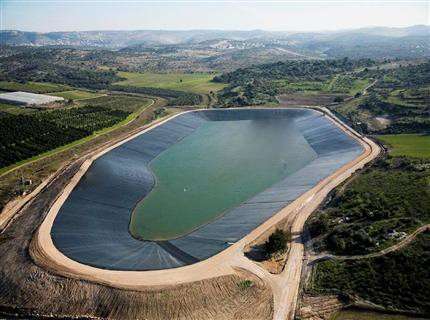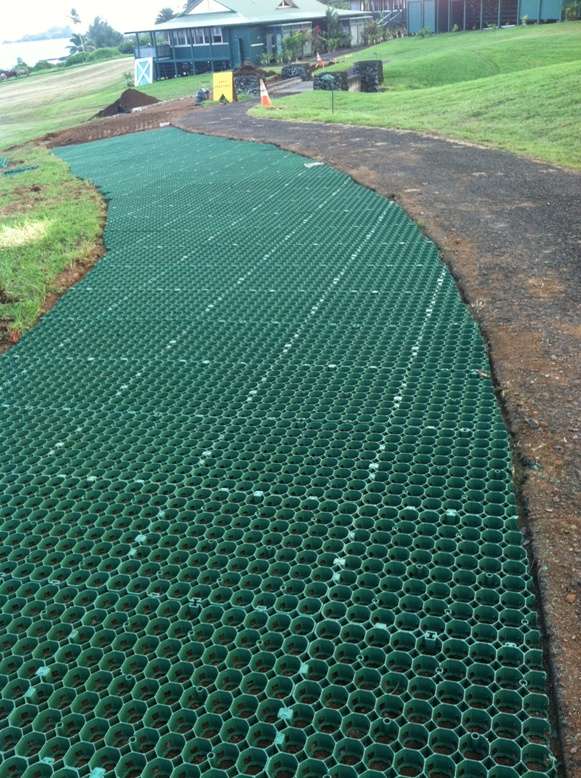
Blog

Jan 5,2023
What role do high-density polyethylene geomembranes play in supplying water to people?
Geosynthetic commodities have become an essential part of the construction procedure for many vital industries. Their physical and price properties are significant benefits compared to conventional alternatives. Manufacturers make geosynthetics from different man-made polymers, which people use in conjunction with rock or soil to improve the stability of terrains. Engineering professionals utilize geosynthetic products in transport, mining, and civil infrastructure products due to their capability to solve various engineering problems related to containment, erosion control, and soil reinforcement. A top-rated geosynthetic product is a geomembrane.
Geomembranes
Manufacturers make geomembranes from an impermeable geosynthetic substance comprising thin continuous polymer sheets. They develop an impenetrable barrier that averts the leaking of dangerous chemicals or harmful contaminants into surrounding atmospheres. People regularly utilize geomembranes to contain potable water and meet irrigation storage needs to prevent leakage. They employ them with other geosynthetic commodities to control liquid movement and offer containment in canal construction, sewage treatment, and mining projects.
Kinds of Geomembranes
Depending on the parent resin utilized, many kinds of geomembranes are available. This blog section discusses the various types of waterproof geomembranes you can bulk purchase from a well-reputed waterproof geomembrane producer.
HDPE geomembrane
Engineering professionals often use high-density polyethylene geomembrane as they prefer to utilize it in lining projects because of its robust ultraviolet resistance, sturdiness, and comparatively low material cost. They often select these water-resistant geomembranes for utilization in exposed applications like reservoir covers, landfills, canals, and pond liners. This is because of the low initial substance cost and high chemical resistance. It features higher thicknesses which other kinds of geomembranes do not provide. High-density polyethylene geomembrane is also very sturdy relative to its weight and can tolerate higher temperatures.
An outstanding feature of this geomembrane is its ultraviolet and chemical resistance, making it suit large area applications where sound quality installation is needed. Apart from that, high-density polyethylene is food-safe, permitting people to use it to store potable water.
LLDPE Geomembrane
Linear Low-density polyethylene geomembranes are more flexible than high-density polyethylene, making. Therefore these geomembranes are more appropriate for installation experts who need an impermeable geomembrane. It is composed of virgin polyethylene resins, helping it resist ultraviolet exposure and low temperature. Engineers can utilize linear low-density polyethylene geomembranes in the long term as these geomembranes will remain sturdy and durable for years. Its ideal use is related to industrial services, like fluid storage tanks, animal waste, and environmental containments.
PVC geomembrane
Polyvinyl chloride geomembrane is a thermoplastic water-resistant substance composed of stabilizers, plasticizers, and vinyl. Manufacturers make this polyvinyl chloride geomembrane by breaking ethylene dichloride into a vinyl chloride monomer. Then, they polymerize it to manufacture polyvinyl chloride resin. It is puncture, abrasion, and tear-resistant, which tells us that its substance is best for averting pollutants from entering water sources and upkeeping potable water. Polyvinyl chloride geomembranes are very flexible and best suit wastewater lagoon liners, soil remediation, tank linings, canals, and landfill sites.
EPDM geomembrane
Ethylene Propylene Diene Monomer geomembrane is a durable and flexible substance that can tolerate extreme climatic conditions and resist punctures. Its texture is rubber-like and features ultraviolet stability with high strength. Engineers usually utilize ethylene propylene diene monomer geomembranes as surface barriers for dams and the rest of irrigation sites. It is also simple to install. Therefore, backyard landscapers utilize this kind of geomembrane. It also suits agricultural uses like covers, liners, and irrigation ponds.
Applications of waterproof geomembranes
Mining
In the nineteen seventies, miners began utilizing geomembranes, which has since increased. Mining experts utilize geomembranes as a lining solution for heap leach pads, tailing impoundments, and evaporation ponds. Regulators regulate the construction and design of these heap leach pads to safeguard the atmosphere from exposure to dangerous chemicals, so a lining system, normally a high-density polyethylene geomembrane, develops an important part in building these heap leach facilities. Mining experts also use heavy duty drainage boards along with geosynthetic liners to seal the mine and avert waste commodities from polluting the surrounding atmosphere. Overall, geomembrane is an efficient and safe solution to safeguard the atmosphere from dangerous industries.
Water industries
High-density polyethylene geomembranes play a crucial role in supplying tidy water to communities. People utilize them in facilities related to wastewater and drinking water, encompassing sewage treatment. Whenever they seal reservoirs, dams, and canals with water-resistant geomembrane liners, they circumvent contamination from groundwater. People also utilize geomembranes to ensure that soil and the rest of the contaminants do not pollute potable water. These geomembranes also help them avert water loss through the infiltration of water into the nearby soil. Lining a canal or dam with waterproof geomembranes can cut down seepage and thus enhance the effectiveness of transportation and storage. People also utilize geomembranes as secondary containment for brine solutions, solar ponds, and underground storage tanks.
Marine (Pontoon construction)
Marine professionals widely utilize high-density polyethylene geomembranes in the marine sector, especially in the building of jetty platforms or floating docks supported by pontoons.







